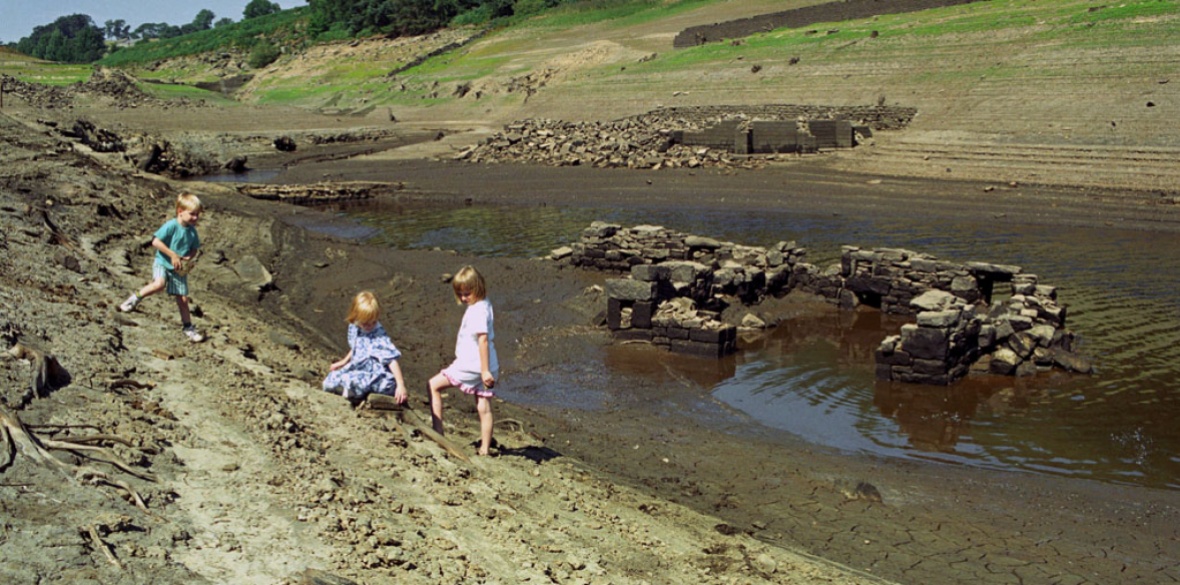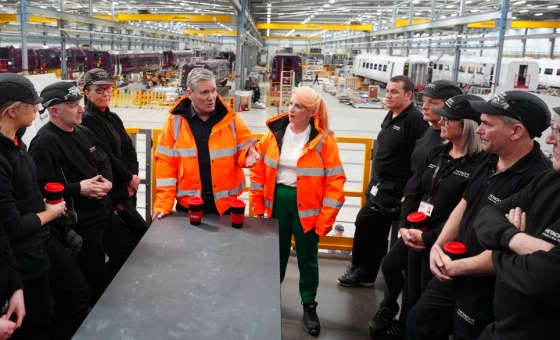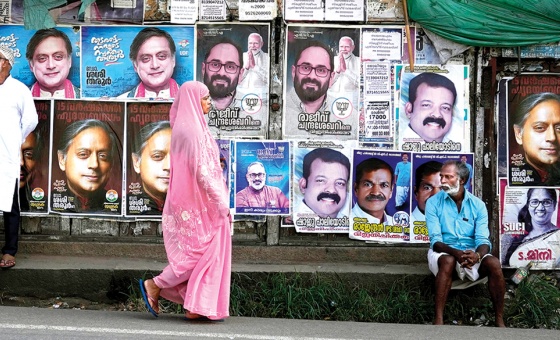This is the last article you can read this month
You can read more article this month
You can read more articles this month
Sorry your limit is up for this month
Reset on:
Please help support the Morning Star by subscribing here
IN 1995 West Yorkshire ran out of water. Pennine reservoirs serving the county ran dry as the sun blazed and rain failed to fall.
As water levels fell, old hamlets which had been flooded to create the reservoirs, emerged, ghost-like, from the depths.
Reservoir beds turned into stretches of wrinkled, dried mud. Disaster loomed for the cities of Leeds and Bradford, the towns of Halifax, Huddersfield and Wakefield and dozens of smaller communities.
Yorkshire Water, the company which took over when the Thatcher government privatised the water supply industry in 1989, had introduced a hosepipe ban, which was about as much use as a chocolate teapot.
The company told the worst-threatened communities, Bradford and Halifax, that it was to install standpipes in the streets. It said there would be day-on day-off water disconnections.
It installed a token standpipe in one Bradford street to demonstrate the system.
Then an irate pensioner ran from her home and told a quivering public relations man that if her water went off she would “stick the standpipe up your arse” — her words. It was on TV that night.
At a weekly media conference staged by Yorkshire Water at its headquarters in Leeds, chief executive Trevor Newton announced that, in the interests of saving water, he had not had a bath or shower for three months. The journalists sitting at the table leaned away from him.
He staged a televised demonstration in his bathroom at home showing how to have a “good wash” using half a basin of water.
Then it emerged that he had relatives in the north-east, which had plentiful supplies of water, and was nipping up there regularly for a nice soak in the bath.
In the east of Yorkshire there was plenty of water, but there was no way of transporting it to the west. The company had failed to invest in a much-needed countywide distribution system to transfer supplies to areas in need.
In desperation, Yorkshire Water hired 1,000 tankers to do the job.
The tankers thundered along the roads day and night, from east to west and back again, with drivers working rotating eight-hour shifts. It went on for weeks.
The company asked the government for permission to increase the maximum amount of water it could take from Yorkshire rivers.
The government hastily agreed, acutely aware of the damage being done to its boasts of “increased efficiency” in the water supply industry under privatisation.
But environmentalists and conservationists raised the alarm, saying the rivers’ aquatic life was under threat, with images of fish flapping helplessly in a trickle of river water.
Throughout the crisis numerous statistics emerged relating to it: the capacity of local reservoirs; daily consumption in West Yorkshire; which areas used most, etc.
But the two statistics that stuck in the public’s minds were these: first, their water bills had increased by 60 per cent in the six years since Yorkshire Water took over; second, Yorkshire Water was losing 34 per cent — more than a third — of its treated water supplies through leaking pipes.
Instead of investing to reduce the level of leaks, Yorkshire Water handed out its profits in bonuses to directors and dividends to shareholders.
There’s no wonder the old lady in Bradford told them what she would do with their standpipe.
Bradford, with a population of 300,000, was down to one week’s supply. Neighbouring Halifax was down to 10 days.
In preparation Yorkshire Water stacked warehouses with hundreds of thousands of cases of bottled water.
Emergency services, the NHS and others held urgent meetings on what to do.
Then it rained. The reservoirs slowly filled.
Although the crisis was over, public anger remained. So Yorkshire Water staged its own two-week “independent” public inquiry into how the crisis came about. It was held in Leeds Town Hall.
Media interest was intense. Each day journalists were handed a huge pile of papers relevant to that day’s business. It was impossible to wade through them.
But one journalist found a document buried in the pile. It was a proposal to evacuate the city of Bradford. That’s 300,000 residents, hospitals, care homes, universities and colleges, factories, businesses, the lot.
The fact that evacuation didn’t happen didn’t matter. It illustrated the level of catastrophe faced by the people of West Yorkshire thanks to the greed and incompetence of Yorkshire Water.
After the inquiry Yorkshire Water installed a pumping system to transfer water from one part of Yorkshire to another, and from the giant Kielder Water reservoir in Northumberland, in the event of a recurrence.
If the company had invested its fat profits such a scheme in the first place — along with mending its leaking pipes — there would have been no supply crisis in West Yorkshire in 1995.
And so to today. As reported in the Morning Star, the head of the Environment Agency, Sir James Bevan, has warned that Britain faces a water supply crisis which some have described as “the jaws of death.”
It’s partly to do with climate change.
But general union GMB, which is running a Take Back the Tap campaign, revealed that the nine privatised water companies are losing three billion litres of treated water a day — around 25 per cent of their supplies — through unrepaired leaking pipes, while in the last five years they have made £6.5 billion in profits.
Privateer Severn Trent is running a trial in which it uses Uber taxi drivers to check out reported leaks, rather than send a trained, qualified (and more expensive) water engineer.
It’s not that the water companies haven’t learned from Yorkshire Water’s near disaster of 1995. It’s just that they don’t give a damn.
The Labour Party has pledged to take the water supply industry back into public ownership and management if it is elected to power.
It can’t happen soon enough. Ask the people of West Yorkshire.
The overseas firms with a stake in our water
ENGLAND’S nine privatised water companies are 70 per cent owned by overseas companies whose shareholders include “the super-rich, banks, hedge funds, foreign governments and businesses based in tax havens,” according to general union GMB.
Foreign ownership includes:
- Malaysian company YTL Corporation Berhad owns Wessex Water
- Cheung Kong Group, a multinational registered in the Cayman Islands run by family of Li Ka Shing (Hong Kong’s richest person), owns 80 per cent of Northumbrian Water
- US hedge funds Blackrock, Lazard and Vanguard have stakes in Severn Trent, United Utilities and South West Water
- Germany’s Deutsche Asset Management and US private equity company Corsair Capital own half of Yorkshire Water
- US investment company JP Morgan Asset Management owns 40 per cent of Southern Water
- A third of Thames Water is owned by companies in the United Arab Emirates, Kuwait, China and Australia
- Australia’s Colonial First State Global Asset Management owns a stake in Anglian Water, Severn Trent, United Utilities and South West Water











